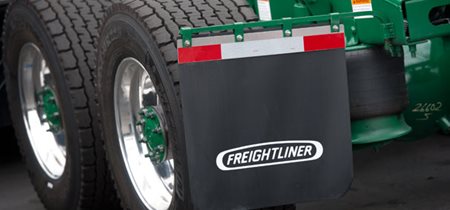Purchasing a truck or any vehicle takes research and inspection before handing over your hard earned money. Many people are aware of the basics, such as the year, miles and price, but wouldn’t you feel more confident and knowledgeable walking into a dealership and knowing what to actually look for? The more you know about what you are buying, the more money you can save, not only at the time of purchase but also on possible repairs and downtime that may occur.
Here is a list of what to look for when buying a used truck.

Under the hood:
- Oil - Check around the fill cap and on the dipstick for any signs of a milky residue. In most cases this indicates moisture. Determining how the moisture got in the engine will tell you if this is a serious mater or nothing to worry about. The causes could range from a blown head gasket to a change in weather conditions causing condensation.
- Radiator - Look for bent, missing or clogged cooling fins and make sure the coolant level is full. The purpose of the radiator is to keep the engine cool. If not looked after and inspected properly, your truck can overheat.
- Electronic Control Module (ECM) - Have all reports pulled from the ECM. This will determine everything that the engine has been through for its entire lifespan.
- Vehicle history report - Using the Trucks VIN number (17 characters) you can retrieve the most current information available such as accident history, number of owners and title information.
Check for leaks in the fuel line and loose connections or cracks in hoses while you’re under the hood. With the engine running, listen closely to see if you hear a knocking or tapping noise that is not normal. If you do then the engine needs to be looked at. Once the engine gets warm there should be no smoke coming from the exhaust. If there is, that may be a sign of burning oil.
The condition of the cab (inside and out):
- Interior condition - Keeping in mind the year of the vehicle while looking at the overall wear of the cabs interior. Make sure seat belts, radio, A/C, heat, glove department, horn, door locks and latches all work properly. While the engine is on, look over all gauges making sure they are accurate.
- Mirrors, windows and lights - Roll windows all the way down and back up to ensure they operate smoothly. Check all windows for chips, cracks and pitting. Test the stability of all mirrors to make sure you are not going to have problems. Examine headlight and taillight housings for general condition and rust.
- Alignment - When test-driving, make sure the steering linkage is tight and watch for any uneven steering.
- Under carriage and frame - Check the undercarriage for any damage. Examine the frame and cross members for cracks, broken welds or bends. Look for leaky shocks and make sure the front axle is not bent. Keep an eye out for any surface or structural rust, especially around the frame.
- Fuel tank - Examine the fuel tank straps and gaskets for wear and slippage. Check the tank itself for wear and leaks.
Wheel related:
- Tires - Look for uneven wear and scuffing on all tires. Check for any hub lube on the inside of the wheels which indicates a failed wheel seal.
- Brakes - The brake lining should be no thinner than ¼ inch, so make sure to check the condition of the brake lining. Ask when the brake pads were last changed or check them yourself to estimate the remaining percentage left. Ensure that the airlines from the truck to trailer are not broken.
- Wheel bearings - Make sure wheel bearings are not leaking fluid. If fluid comes out dirt will clump around it. Have bearings inspected properly by a mechanic since adjusting them requires diligence and has to be precise.
Don’t be afraid to ask questions, ask to see maintenance logs, find out why the previous owner is selling the truck, know if the truck is still under any warranty, how many miles per gallon the truck is currently getting, etc. This is a big investment so take your time and proceed with caution. Make sure you are comfortable and confident with the truck before you buy. DO YOUR RESEARCH.